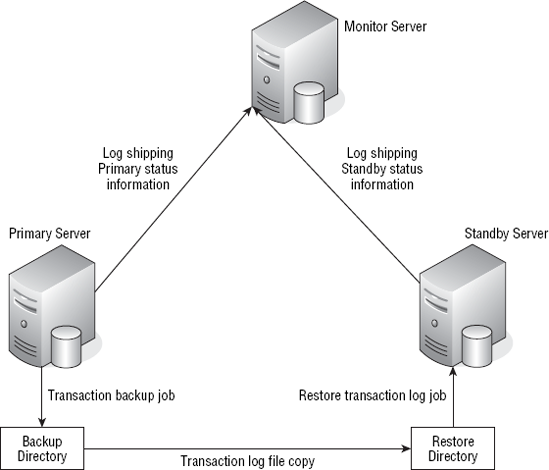19.2. Log-Shipping Architecture
The basic log-shipping architecture is shown in Figure 19-1. The architecture requires three servers: a primary server, a secondary server (also known as the standby server), and an optional monitor server.
Figure 19-1. Figure 19-1

19.2.1. Primary Server
The primary server is the production server to which users connect and do work. It holds the SQL Server 2008 instance that needs to be protected in case of hardware failure, software error, natural disaster, or user-induced errors. In log shipping, the primary server is configured to execute a SQL Agent job to back up the transaction log to a file. For log shipping to function, the server must be using the database recovery models of either Bulk Logged or Full. (See the Database Properties using SQL Server 2008 Management Studio.)
19.2.2. Secondary Server
The secondary server is the backup SQL Server 2008 instance that maintains a copy of the primary server database. The secondary server uses the SQL Agent to copy the transaction-log file from the backup folder where it was placed by the primary server's transaction-log backup to restore it. The secondary server is configured with two SQL Agent jobs: one to copy the transaction-log file from the shared backup folder and the other to restore the transaction log. For log shipping to function, the secondary server must be using the database recovery ...
Get Professional Microsoft® SQL Server® 2008 Administration now with the O’Reilly learning platform.
O’Reilly members experience books, live events, courses curated by job role, and more from O’Reilly and nearly 200 top publishers.

